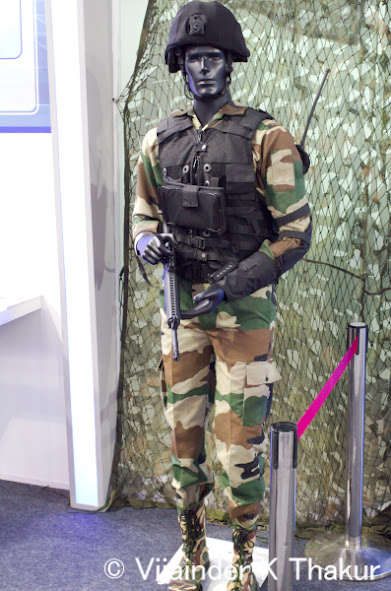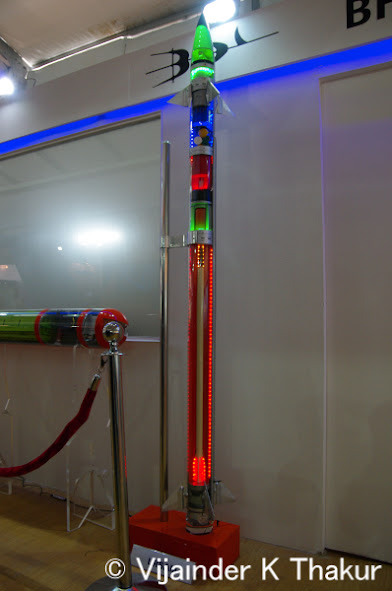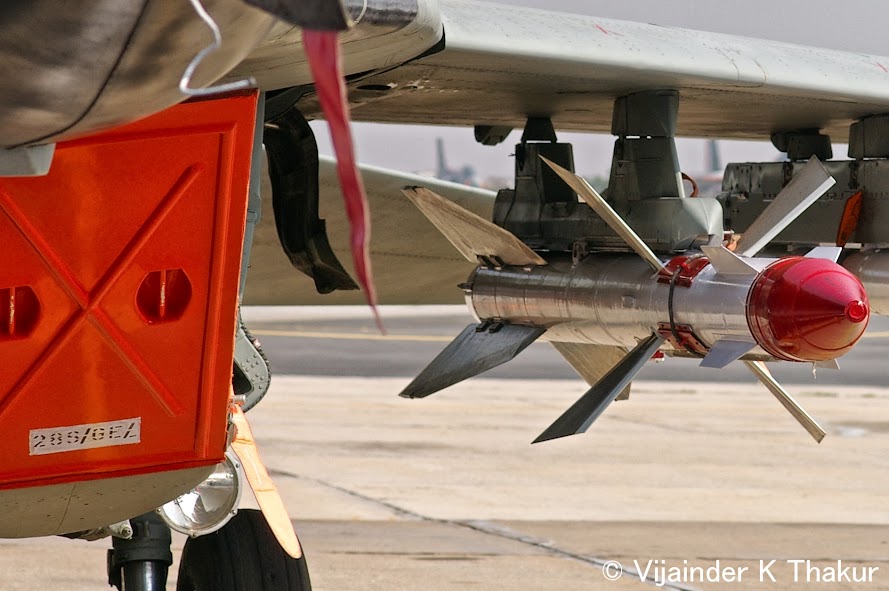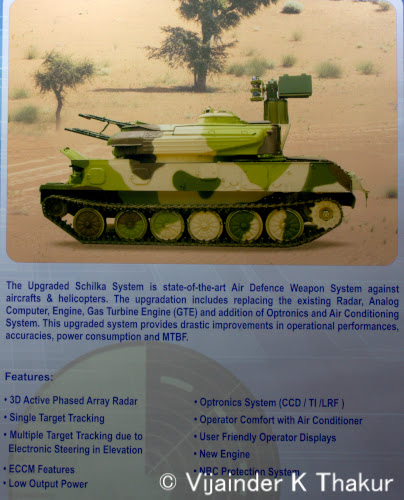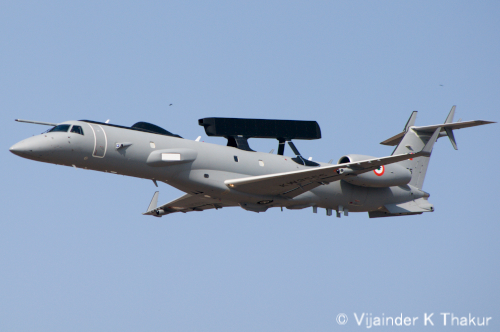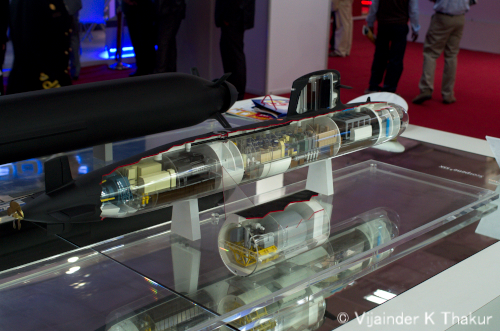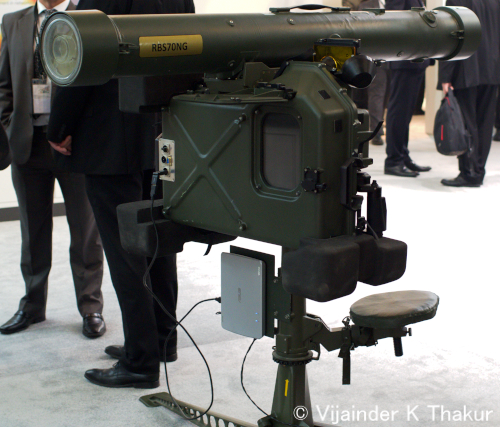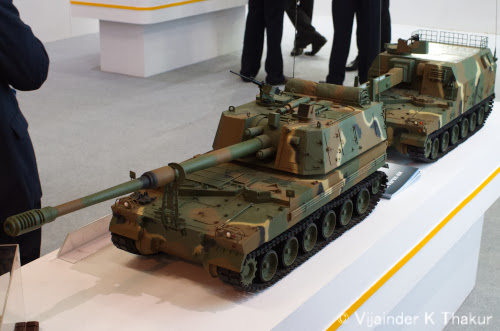IJT HJT-36 Sitara at DefExpo 2014
The IAF recently released a Request for Information for an Intermediate Jet Trainer (IJT) that would be used primarily for Stage-2 training of its pilots with a secondary counter insurgency role.
The selected vendor will be required to discharge 30% offset obligations as per the provisions of DPP-2013.
First thing first! The release of the RFI doesn't mean the HJT-36 Sitara project is dead. Neither does it mean that the Sitara won't be the IJT that the IAF ultimately ends up procuring!
The RFI is likely aimed at ensuring that the IAF has a fallback if the Sitara fails to obtain IOC by June 2014 and FOC in reasonable time thereafter.
Even if HAL surprises the IAF and the country by obtaining IOC in June, and FOC in December, its HJT-36 Sitara may not measure up to the QRs stipulated in the IAF RFI, specially those pertaining to Stall and Spin characteristics.
An HAL rep told IDP Sentinel at DefExpo 2014 on February 7, 2014 that HJT-36 is likely to commence stall tests within a month. HAL has identified the point on the wing where the boundary layer flow is turning turbulent and breaking up leading to a pre-stall wing drop; HAL plans to use boundary layer energizing strakes to remedy the problem.
What is clear to me as a pilot is that there is little chance of HAL remedying the issue by IOC. In a recent statement in parliament, Minister of State for Defense Shri Jitendra Singh hinted that stall and spin characteristic refinement could wait till FOC. That would be a big mistake, because there is really no guarantee that the problem would be remedied - ever! Besides, there is too much optimism in the belief that it could happen by December 2014. If it was that simple, it would have been remedied already. After all, it's nearly three years since PT1 crashed in April 2011 following loss of control.
HJT-36 appears in compliance of all QR's stated in the RFI. Indeed, the QRs are likely to be an exact copy of the QRs given to HAL for developing the HJT-36.
I will go to the extent of saying, the IAF'S Spin QRs are contestable as being overstated.
Anyway, it's for the reader to judge. Here is a summary of the IJT RFI QRs
Luckily for HAL, there are few single engine jet trainers around. Two contenders could be Italy's
Aermacchi MB-339 and Spain's
CASA C-101.
General Characteristic
The IAF is looking for a light, twin seat (tandem or side-by-side?), single engine jet trainer with conventional controls in which the instructor seat can be used for simulating emergencies.
Stall and Spin
The aircraft must give an unmistakable natural stall warning, irrespective of the configuration. It must be resistant to spin but should allow intentional spinning with safe recovery upto six turns to either side. The aircraft behavior in the spin should be predictable and consistent.
Handling Characteristics
The IJT should be capable of performing loops, barrel rolls, rolls, combination maneuvers and negative 'g' flight without adverse effects on the engine and aircraft structure. It should be capable of sustained inverted flight for at least 30 seconds at sea level at maximum takeoff power.
Flying Envelope
When flying in Normal Training Configuration (NTC), the aircraft must be capable of maneuvering at up to to +7.0 g to -2.5 g. (NTC would correspond to clean configuration or with empty drop tanks) With external stores (other than empty drop tank) the aircraft should be cleared for operations at accelerations upto +5g and -1.5g
Max speed in NTC must not be less than 750 kph CAS and the aircraft should not display any marked compressibility effects upto 0.75 M. A service ceiling of 9-km is required.
In clean configuration in level flight stall speed must not exceed 175 kph without flaps or slats. NTC glide ratio should be better than 1:12
Climb and Turn Performance
In NTC, the takeoff distance to clear a 15-m obstacle from a dry, hard surfaced runway at sea level and with nil wind must not exceed 900-m; ROC must be at least 20 m/s.
The aircraft should be able to perform sustained turns up to 3.5 ‘g’ at sea level in NTC and 2.25 ‘g’ at max AUW.
Range and Endurance
NTC ferry range should be at least 1500-km and endurance, 2-hr at 3-km altitude.
Armament
The aircraft should be capable of carrying at least 1000 kg of external load, have a minimum of five hard points, each stressed to carry at least 300-kg stores. It should be, free from buffet, dutch roll, snaking and wing rock during air to ground weapon training.
The aircraft should be capable of employing the following armament :-
(a) Gun. A light weight gun/ gun-pod with adequate ammunition for at least 5 sec of firing time.
(b) Rocket Pods. Reusable rocket pods.
(c) Bombs. Should be able to carry at least 4x250 kg retarded or ballistic bombs. The stations should be capable of employing Carrier Bomb Light Stores (CBLS) type of dispensers for carriage of practice bombs (25 lbs and 3 Kg).
